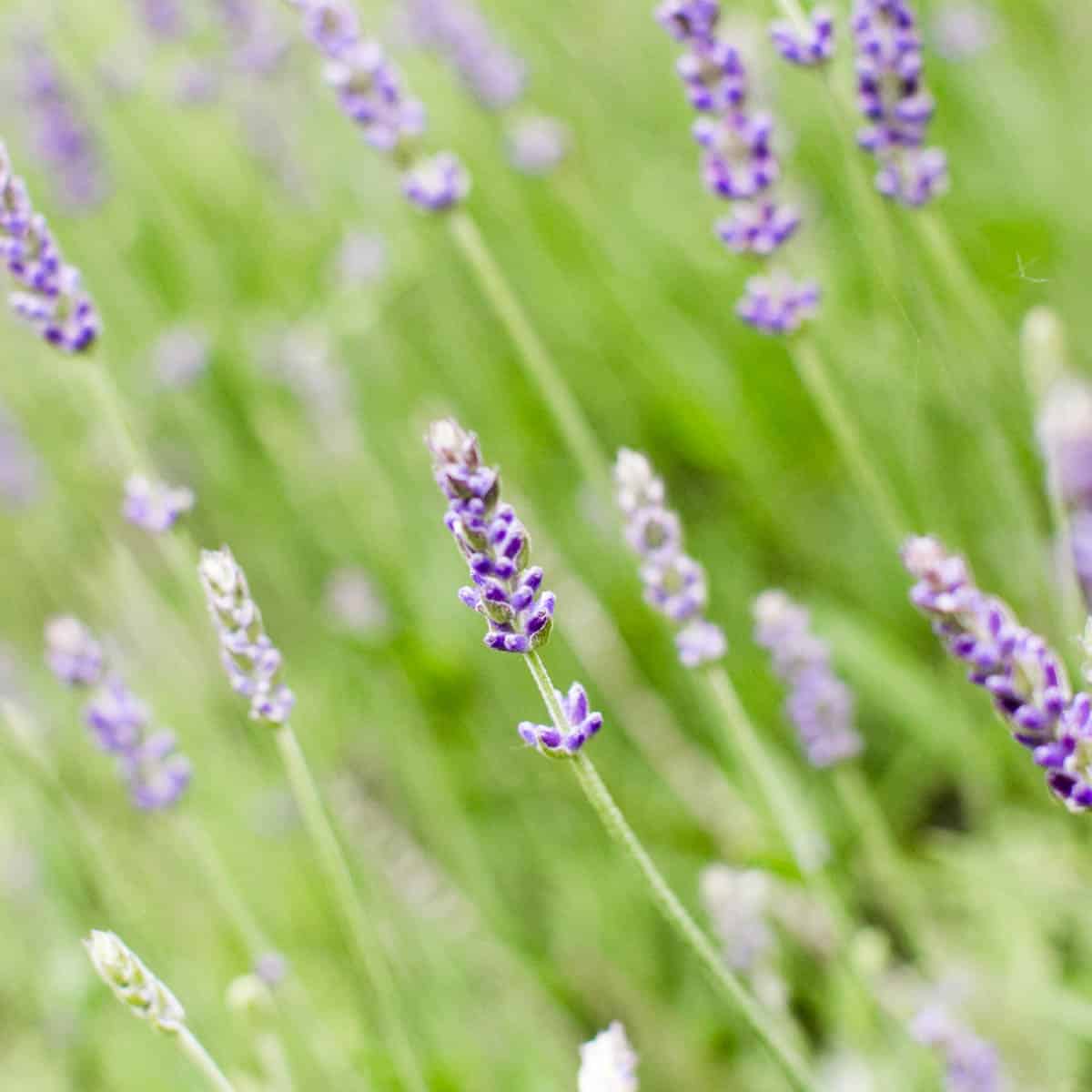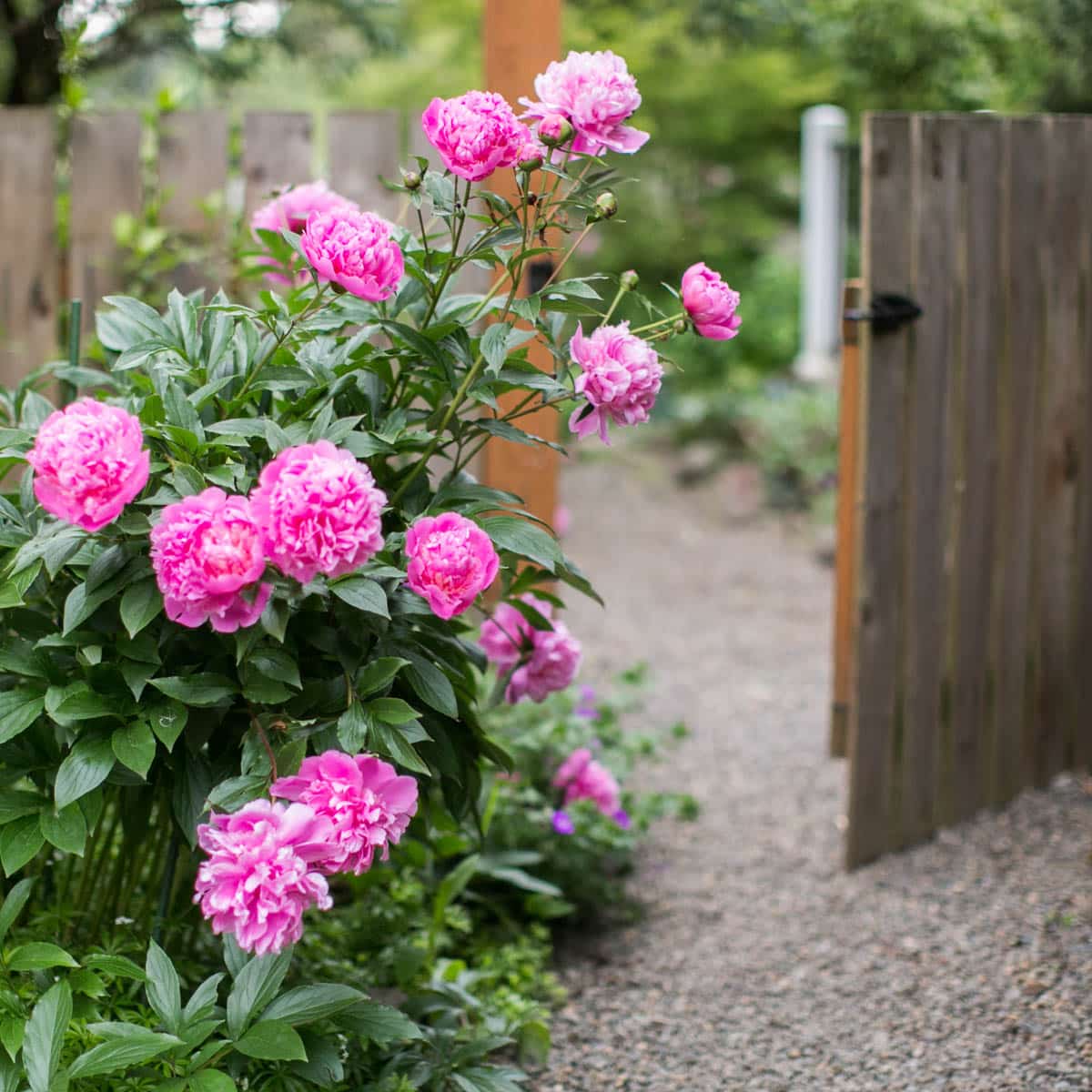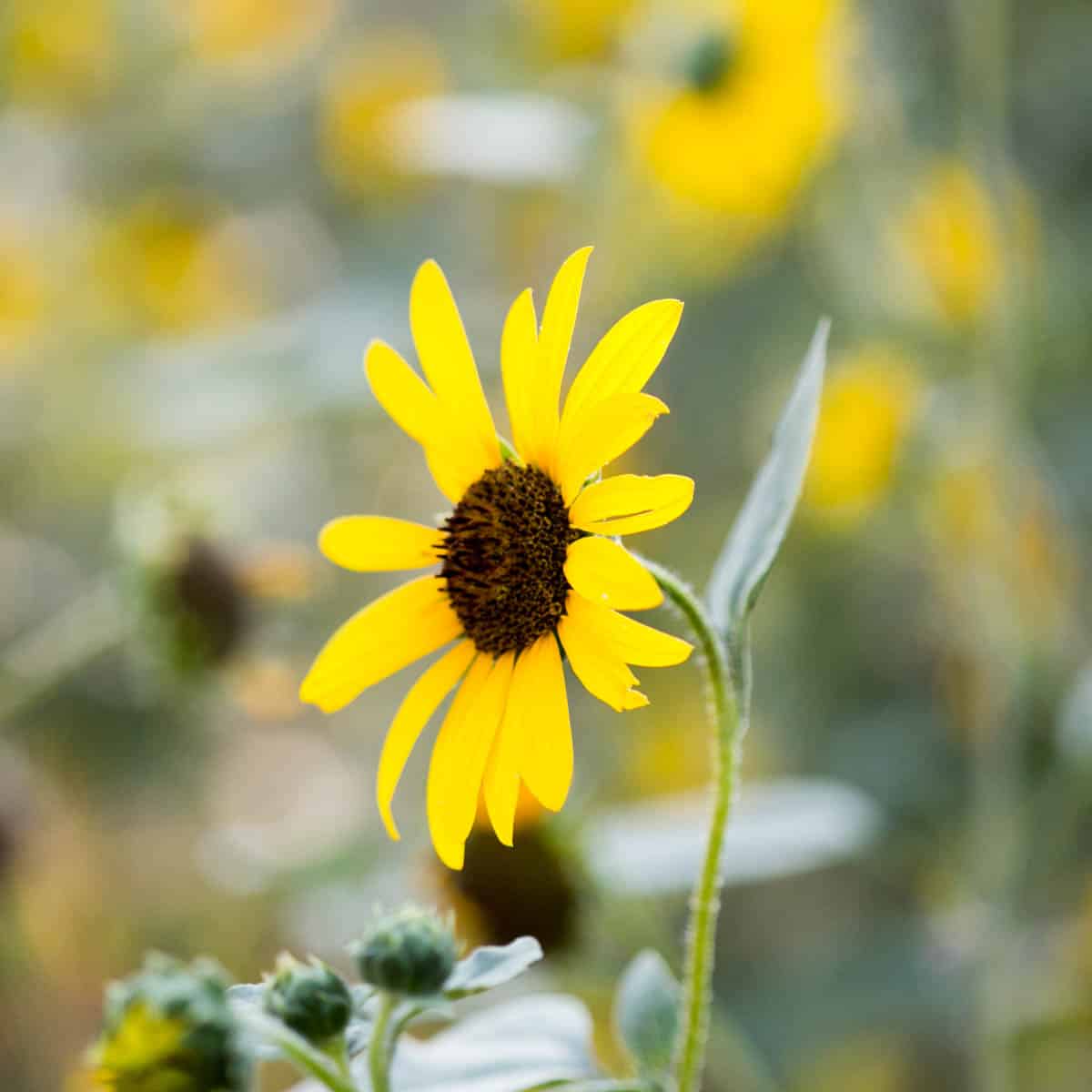Are Petunias Perennials? (And How To Grow And Care For Them)
Petunia flowers wave cheerfully from window boxes and hanging baskets and offer bright floral cheer from spring through early fall. These gorgeous flowers burst with color, tolerate full sun and are fairly easy to grow. But are petunias perennials? Or annuals?
Read on to learn all about how petunia plants grow and how you should care for them in your zone!

Are Petunias Annuals Or Perennials?
Petunias are most commonly grown as annual flowers. They must be re planted each year in most climates. Petunias are either purchased as new plants each year or grown from seed each spring. They do not survive frosts and are typically planted in late spring to early summer.
Petunias are technically classified as tender perennials. Tender perennials are not winter hardy. They cannot survive frost so in most zones they are grown as annuals, though in very warm climates they can be perennials!
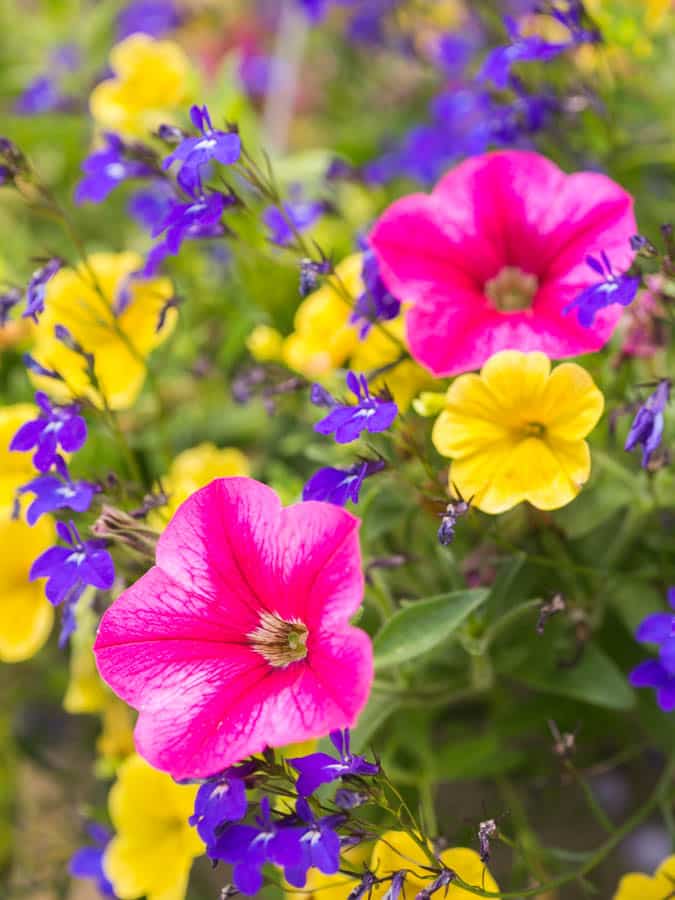
As annual plants petunias will give you a long and rewarding bloom season, offering colorful displays of wavy flowers for months. Grown as annuals in most zones petunias will die at first frost.
In zones 9-11 petunias can be grown as tender perennial flowers. These areas are typically the Southern parts of California, Texas and South Florida. A tender perennial is defined as a perennial that cannot survive frost, and these climates feature mild winters and warmer temperatures.
Petunias are native to Mexico and Western South America, so climates that mimic this natural habitat allow petunias to grow year round.
Did you know? With their bright colors and tubular shaped flowers, petunias are a siren for hummingbirds, bees and butterflies. Fill your flower beds with petunias and the pollinators will flock!
You can research your local USDA hardiness zone right here.
About Petunias
Petunias are famous for their brightly colored cascading flowers. They love well-drained soil and enjoy full sun. Petunias can also tolerate some afternoon shade.
They are great flowers to use as bedding plants, window boxes, containers and featured in hanging baskets. The large flowers attract hummingbirds and are available in pink, yellow, purple, white and even black velvet!
Petunias are native to South + Central America and are heat loving plants. This is why they thrive in climates that are very warm!
These beautiful flowers will are available for purchase in spring and will bloom until the first severe frosts of Autumn. They are a long blooming, colorful addition the flower garden.
Types Of Petunias
There are many different petunia varieties:
- Wave Petunias: This type of petunia has a spreading habitat making them a perfect fit for filling up flower beds or hanging baskets. Wave petunias are very versatile!
- Milliflora Petunias: These miniature plants feature small flowers that are only an inch and half in diameter. Perfect for mixing with other flowers in containers
- Multiflora petunias: feature compact, smaller flowers that grow abundantly and are available in single and double blooms. These are bushy plants that are often grown as trailing varieties in hanging baskets
- Grandiflora petunias: These are the largest and oldest variety of petunias (a true classic!), featuring oversized single blooms
- Easy Wave: Easy wave petunias are very fast growing and high performing, producing many beautiful blooms each season
Get our beginner’s guide to growing flowers here.
Common Uses For Petunias
Petunias are an extremely popular plant with vibrant colors. Uses for petunias:
- Bedding plant: filling up the landscape with bold hues of pink, purple, white and yellow
- Hanging baskets: these popular flowers often decorate city sidewalks with lush and overflowing baskets
- Window boxes: overflowing from window boxes and spilling a rainbow of beauty for curbside appeal
- Containers: petunias are easy to grow container plants that last until late summer – early fall
- Ground cover: bedding types of petunias can be grown in large overflowing mounds of flowers
- Supertunia: These trailing types of petunias do not need deadheading and are low maintenance flowers

Growing Conditions Needed
In general, petunias love soil rich with organic matter, regular watering and 6-8 hours of full sunlight. Continue reading for details on growing this gorgeous luscious blooms!
When To Plant Petunias
You will want to wait until all danger of frost has passed before planting petunias or leaving containers or hanging baskets out overnight. There has been many an excited gardener who purchased petunias and left them out too early (we speak from experience!).
Wait until all danger of frost in your growing zone has passed so that you don’t wake up to dead petunia plants!
Soil For Petunias
Petunias love fertile soil and will not thrive in poor soil. It is a good idea to amend the soil with rich organic matter when planting. This will increase both nutrients available to the plant as well as soil drainage.
Petunias also love well-draining soil that allows for water to flow freely through the roots.
When prepping flower beds for petunias, strive to have a light, sandy soil that is rich in organic matter.
And when planting in pots or a hanging basket give your petunias an awesome potting mix that is specific for their needs. We have used Miracle Gro potting mix with good results. Check out your local garden centers or big box store to peruse different potting mixes (there will be several to choose from).
Make sure that potted plants always have good drainage. Each container or hanging basket should have multiple holes in the bottom of the container for water to drain from. This will prevent root rot from developing.
Avoid planting in heavy clay soils that do not have good drainage and nutrient poor soils.
Water
Although petunias are somewhat drought tolerant, regular watering will encourage consistent blooming.
Water petunias about about once per week in moderate to cool weather. During dry periods and in the heat of summer you will want to water more regularly.
Check for moist soil daily in the warmth of summer and water the plant until you see the liquid running out from the bottom of the container.
Water petunias in garden beds when the top 5-6 inches of soil are dry.
Potted plants and plants in hanging baskets will dry out more quickly, especially during the hot parts of summer. You may need to water once or even twice per day during these hot summer days. Keep a close eye on potted plants during hot weather!
A note on water: heavy rain can damage petunia flowers. If your climate tends towards heavy downpours, consider placing your petunias in a sheltered spot.
Light
Petunias need at least 6 hours of direct sunlight in order to thrive. This helps to encourage lots of beautiful blooms. They will not produce as many flowers when grown in shady areas.
We have found the best location for petunias is morning sun with a bit of afternoon shade or light shade. Hot summers with lots of direct light can take a toll on petunias.
Giving them a bit of afternoon shade can help protect them throughout the growing season and will keep your petunia flowers looking fresh and vibrant!
Fertilizer
Fertilizing petunias will give you consistent, large blooms. The best fertilizer will promote flower production and support overall plant health.
A fertilizer with a balanced NPK ratio is often recommended, but you can also use a fertilizer with a higher phosphorous level to encourage lots of healthy, big flowers.
Get our complete guide to fertilizers for petunias here.
Get the best list of low maintenance flowers for busy people here.

How To Deadhead Petunias
Most varieties of petunias need to be deadheaded. Deadheading petunias regularly keeps the plant looking tidy by removing dead flowers and it also encourages more blooms!
You can deadhead petunias simply by pinching off the flower where the flower bud meets the stem. Always make sure to remove the entire flower with it’s base, not just the flower petals.
For best results, check your petunia plant every few days for wilted, spent flowers and deadhead as needed.
Superpetunias are a variety of petunia that do not need to be deadheaded. These plants are engineered to be self cleaning and the flowers naturally fall (although some clean up around the plant is needed!).
Disease Problems
Although they are easy to grow, petunias do have their share of pest and disease problems to watch out for:
- Gray Mold is a flower blight that can grow on spent flowers, then spread the disease to other flower buds. This pathogen can affect many flowers, and the best way to prevent the disease is with proper care. Give your petunias a lot of space and air circulation, and remove spent flowers quickly. Always water in the morning, giving the plant time to dry throughout the day. If needed, gray mold can be treated with a fungicide.
- Tobacco Mosaic Virus: This is a systemic infection of the entire petunia plant. Unfortunately, there is no cure for this virus and infected plants should be disposed of. Prevent the spread of this dreadful plant virus by disposing of all infected containers and plants and washing your hands thoroughly afterward!
- Flea beetles: This tiny black bug enjoys feasting on petunias. They leave behind tiny holes in the leaves of petunias but luckily the plants can be rescued! For an organic pest treatment use organic neem oil or a mixture of castile soap and water.
Overwintering
In most zones, the winter months are brutal to petunias. At the first sign of frost, they freeze and die.
But you can give overwintering petunias a chance by bringing them inside where temperatures are consistently warm. Or you can allow them to go dormant by slowing reducing the amount of light it receives and then storing it inside in a cool, dry place.
Overwintering petunias can be challenging, so be prepared to grow petunias from seed or purchase starts if need be.
Tips For Growing Petunias In A Cooler Climate
Petunias love warm climates, but that doesn’t mean you can’t grow them in your zone! Here are a few tips for making sure your petunias thrive in a colder climate:
- Wait until the last frost date to buy petunias and leave them out over night. While some climates can host petunias in early spring, many other zones may not be warm enough until later in the season.
- Give your petunias lots of full sun! Avoid putting your petunias in partial shade and make sure they get at least 6 hours of early morning sunlight.
- Don’t over water. Petunias in cooler climates do not need as much water as petunias in hot, arid environments.
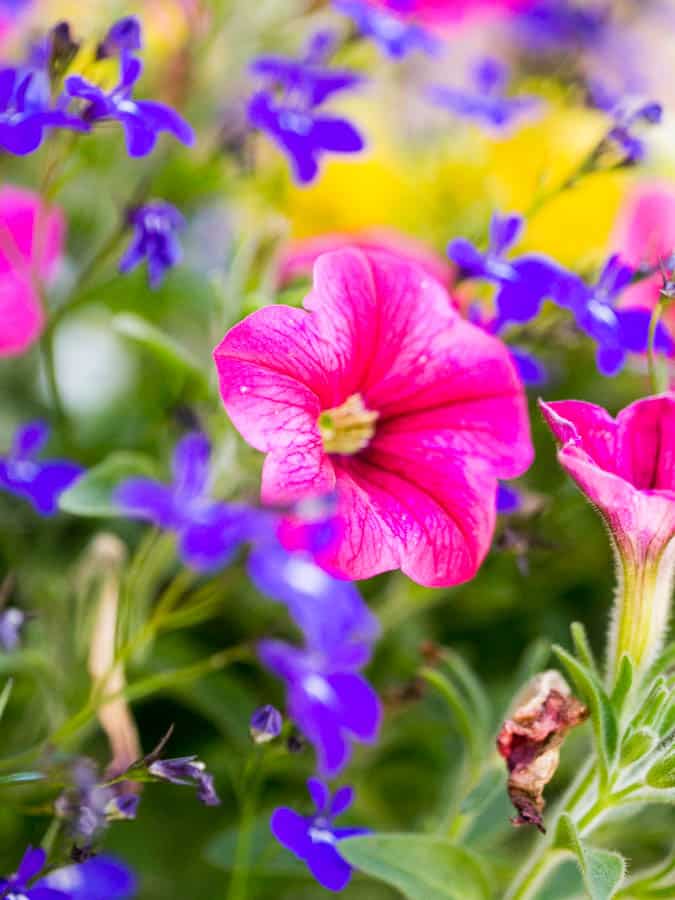
Final Thoughts
Petunias are a vibrant flower that trumpet the arrival of spring and offer terrific blooms all summer long. They offer a great variety of color and add a splash of floral beauty to the garden beds!
Petunias do not tolerate cold weather and in most zones this classic flower is grown as an annual. But a few lucky zones that feature warm weather year round can grow them as an annuals.
Petunias favor fertile soil with good drainage and love sun. They need consistent watering and some varieties will need deadheading… but other than that they are incredibly easy to grow!
We hope this article inspired you to grow your own beautiful petunias this year. Let us know in the comments what your favorite variety is!
Happy gardening!



